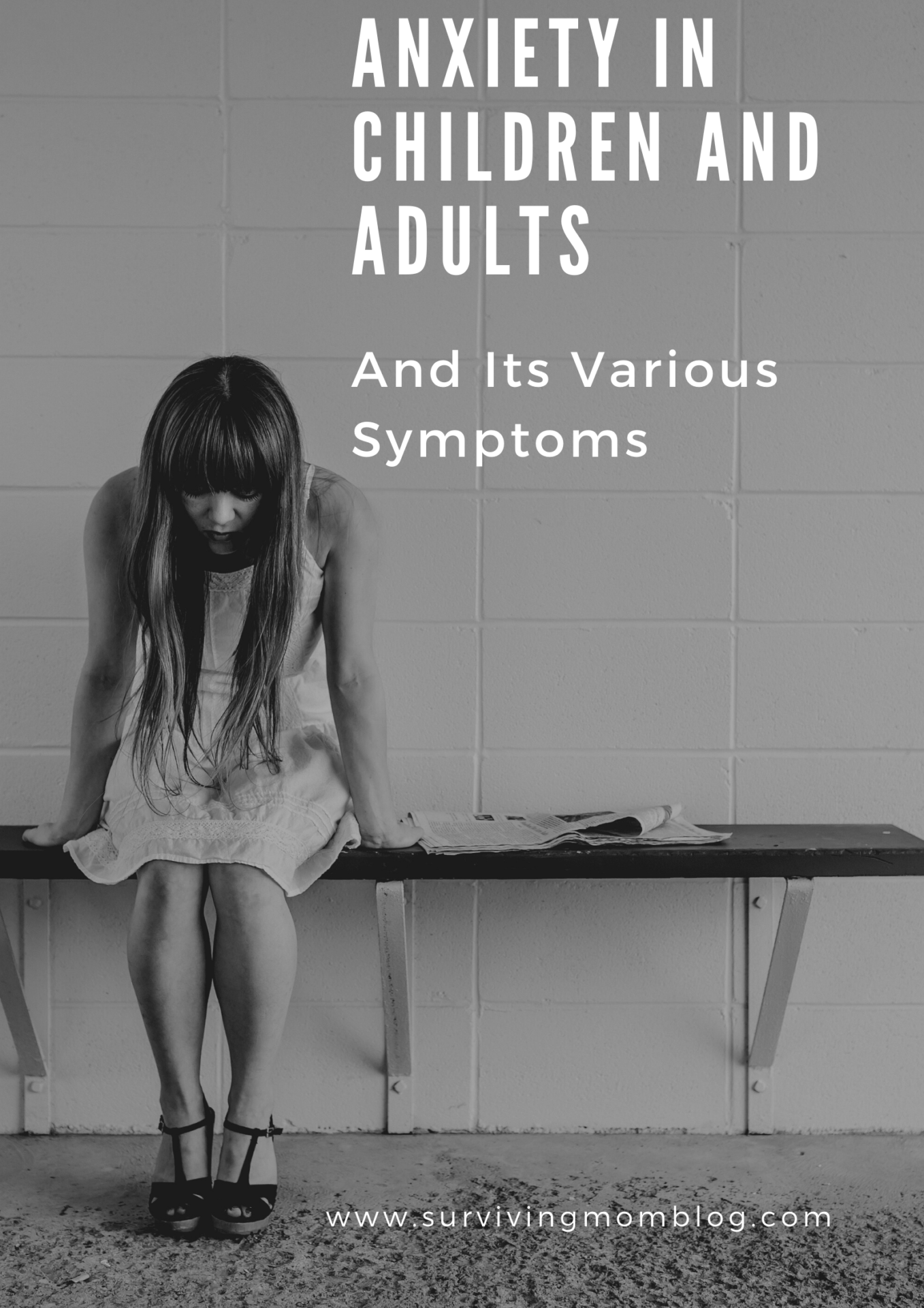
We have all experienced the feeling of anxiousness. However, when does anxiety become a concern? The purpose of this article is to give a fuller understanding of anxiety in children and adults. It is important to clarify the symptoms of anxiety and recognize when anxiety is more than just a normal part of life.
Understanding anxiety versus worrying
Worrying and anxiety are often used interchangeably, but they are different. Worrying is usually more specific (e.g., worrying about getting a good grade on a test), and it often leads to problem solving (e.g., studying). Alternatively, anxiety is more of a general state of being (e.g., I feel anxious because my best isn’t good enough) that triggers a snowball effect.
A good way to decipher between anxiety and worrying is that, “when you worry, you’re typically thinking about an actual event that’s taking place or is going to take place. But when you’re dealing with anxiety, you tend to hyperfocus on events or ideas that your mind creates” (healthline.com, 2018). Worrying varies in intensity and you feel a sense of control, whereas anxiety is much more difficult to control.
Another important distinction is where worrying and anxiety are felt. Worrying is something that happens only in your mind. Worrying are thoughts that may be negative or about something that can go wrong. Anxiety, on the other hand, “has a cognitive element (worry) and a physiological response (stress), which means that we experience anxiety in both our mind and our body” (NYTimes.com, 2020).
Understanding Anxiety in Children and Adults
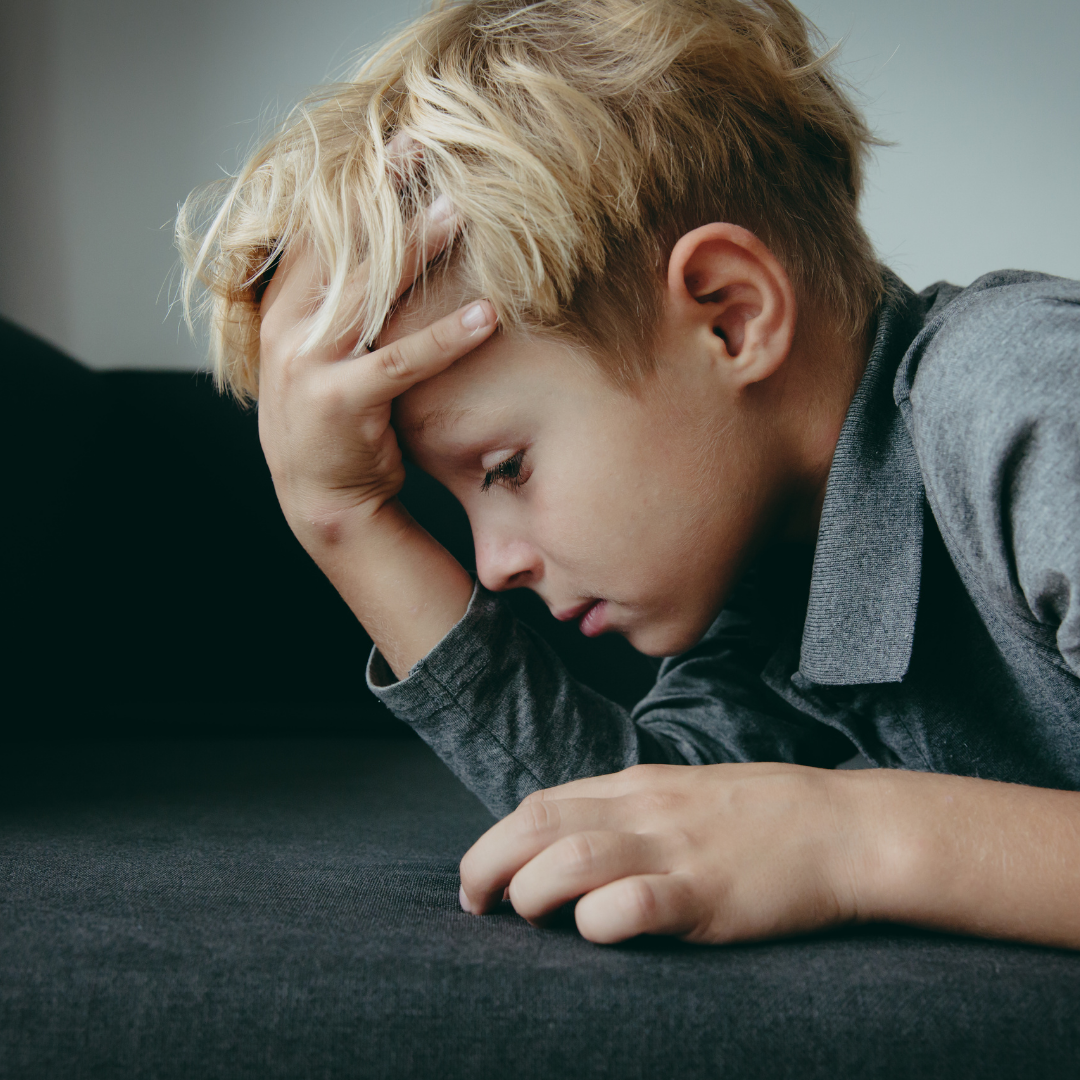
There is such a thing as anxiety that is healthy. It is a means of our brain and body responding to a perceived sense of danger. Therefore, it is a crucial part of our survival instinct. Anxiousness is something that is common and typical in development, especially as children deal with new experiences and situations. The unknown is frightening for many of us, adults as well as children.
However, there is cause for concern when anxiety is frequent and persistent. Anxiety is often hard to recognize in children because of its cognitive component. Often children have a hard time articulating their thoughts and feelings. As a result, parents are only aware of the child’s physical and negative behaviors. Additionally, anxiety may overlap with or present as symptoms of learning disabilities or Attention Deficit Disorders (anxiety.org).
There is stigma associated with anxiety.
Adults may resist admitting that anxiety is impacting their quality of life. As a result, they don’t seek professional help. This resistance is largely because of the lack of societal understanding about anxiety. Those with anxiety are often told to “suck it up” or “it isn’t a big deal.” This may cause someone who suffers with anxiety to feel intense shame and self-loathing, only exacerbating the problem.
There are a variety of symptoms that may be experienced by both adults and children with anxiety. When there is a greater understanding about anxiety, it allows for support, empathy, and proper treatment.
Physical/Psychosomatic Symptoms of Anxiety in Children and adults
Below is a list of physical signs of anxiety:
- Headaches
- Sleeplessness- this includes difficulty falling asleep, staying asleep, and/or frequent bad dreams
- Stomach aches/cramps
- Frequently using the bathroom (for bowel movements or urination)
- Nausea
- Lack/loss of appetite
- A general sense of feeling unwell
- Muscle tension or aches
- Dizziness
- Difficulty breathing
- Racing heart/rapid heartbeat
- Fatigue
- Restlessness/ jittery
- Chest pain
- Unexplained sweating
This list of physical symptoms are things we have all experienced at some point. In other words, if your child complains of a tummy ache, that doesn’t mean your child has an anxiety disorder. That said, it is worth keeping in mind that there may be more going on than meets the eye if your child is complaining of stomach aches regularly or before/during particular situations.
As grownups, we tend to ignore physical symptoms and assume they will go away. However, if you are experiencing any of these symptoms frequently, it is probably something worth investigating. Our bodies are often sending us messages, if we are willing to listen to them.
Emotional/Behavioral Symptoms of Anxiety in children and adults
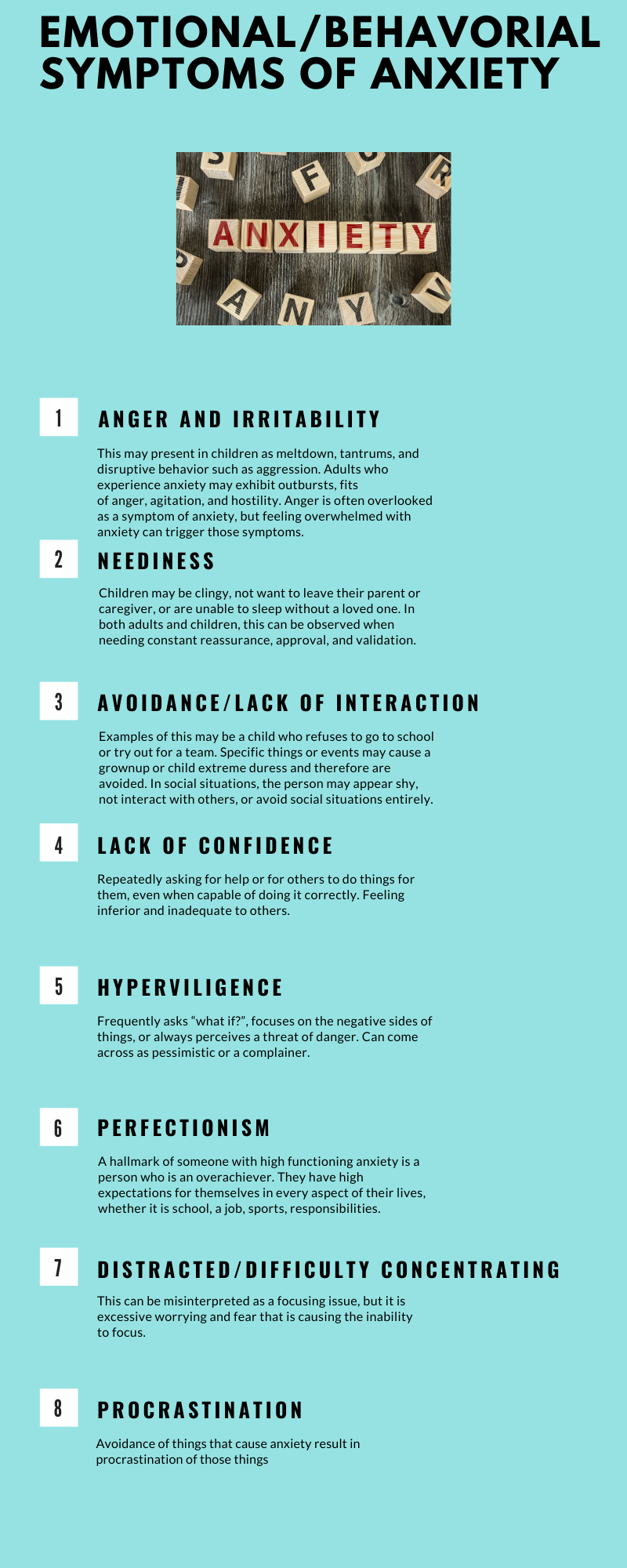
Below are emotional/behavioral signs of anxiety:
Anger and irritability
This may present in children as meltdown, tantrums, and disruptive behavior such as aggression. Adults who experience anxiety may exhibit outbursts, fits of anger, agitation, and hostility. Anger is often overlooked as a symptom of anxiety, but feeling overwhelmed with anxiety can trigger those symptoms.
Neediness
Children may be clingy, not want to leave their parent or caregiver, or are unable to sleep without a loved one. In both adults and children, they may seek constant reassurance, approval, and validation.
Avoidance/Lack of Interaction
Examples of this may be a child who refuses to go to school or try out for a team. Specific things or events may cause a grownup or child extreme duress and therefore are avoided. In social situations, the person may appear shy, not speak with others, or avoid social situations entirely.
Lack of confidence
Examples include repeatedly asking for help or demanding that others do things for them, even when capable of doing it correctly. Feeling inferior and inadequate to others may be due to anxiety.
Hypervigilance
Frequently asks “what if?”, focuses on the negative sides of things, or always perceives a threat of danger. This person can come across as pessimistic or a complainer.
Perfectionism
They have high expectations for themselves in every aspect of their lives, whether it is school, a job, sports, responsibilities. It is great when a person strives to do their best, but there is a line between trying your best and demanding perfection from oneself.
Procrastination
Avoidance of things that cause anxiety result in procrastination of those things
Distracted/difficulty concentrating
This can be misinterpreted as a focusing issue, but it is excessive worrying and fear that is causing the inability to focus.
Controlling
May tell others what to say or do as a type of ritual or have persistent impulses (e.g., repetition of a certain behavior)
When It Is Necessary to Seek Professional Help
If you or your child experience anxiety that is excessive and/or interferes with relationships, other aspects of life, or daily functioning, please speak with a doctor or mental health provider. If you or a loved one are experiencing frequent or several physical symptoms, it is also crucial to seek medical attention. “Physical symptoms of an anxiety disorder can be easily confused with other medical conditions…” (National Alliance on Mental Illness, Dec. 2017).
Anxiety is manageable with proper help and support. Recognizing the symptoms is the first step. I hope this article brings you one step closer to understanding anxiety and the many ways it can rear its ugly head. Anxiety is something you shouldn’t have to suffer with silently.
Disclaimer
This post may contain affiliate links. If you purchase a product via my link I may receive a small commission at no additional cost to you. Please visit our disclaimers here

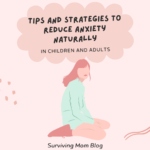
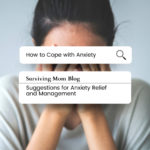

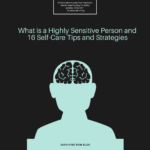
Naomi P Lane says:
It’s really good that you are sharing this information. Anxiety is widely prevalent in our school population and I often worked with these kids. I can’t even imagine how the numbers may have gone up since I retired, with Covid now affecting our youth in so many ways. You have opened up an important dialogue.
Randi says:
Thank you, Naomi. I agree that it is such an important topic, as so many children struggle with anxiety (as well as adults). You bring up an interesting point that understanding anxiety is more necessary than ever with the additional stressor of COVID. There is not enough awareness and understanding out there about the impact anxiety has on so many. I appreciate your support!
Dami says:
Really really interesting!
Today I learned something new. I realized that I had a lot of confusion about the topic.
Randi says:
Thank you! There is a huge lack of knowledge and awareness out there about anxiety and how it impacts people. No two people experience anxiety the same way, and there are so many cognitive and physical components to it. I’m really glad that you found it informative, and it helped clarify things for you!